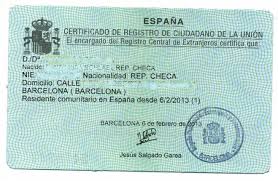
WITH the Costa del Sol property market on the rebound, many owners have now chosen to maximise the return on their bricks and mortar investments and are actively listing their properties with literally hundreds of new (and old) real estate agencies.
The sequence is pretty well known: an owner approaches a real estate agency who, upon basic verification of the property paperwork, lists the property for a convened asking price.
Unfortunately but predictably, the long list of requirements set out in the famous Decree 218/2005 (necessary to put a property up for sale) is rarely met.
Generally though, the information provided tends to satisfy all parties and safeguards agencies in case of unwanted inspectors turning up.
But what the Decree 218/2005 did not envisage is how to deal properties that are partly or insufficiently recorded with the land registry, a legal contingency that’s causing many deals to collapse where searches reveal those discrepancies.
In our experience, we have noted that many proprietors of detached dwellings, and occasionally town houses and semidetached units, actually own more square metres than they officially declare. In other words, there is an excess of built area which may not always be legal.
This may be due to unregistered extensions, guest houses, conservatories, porches, barbecues, terraces, walls, basements or pools, all of which have to be ‘normalised’ if one wishes to avoid losing a potential sale.
Currently, there are two possible scenarios: that the excess built area complies with existing regulations or that it does not.
To find out, we always suggest hiring an architect or surveyor to measure up the property and compare it with the legal documentation and applicable laws and regulations.
This way a vendor will be able to rectify potential inconsistencies that buyers will – nowadays – invariably detect, and object to, when carrying out searches.
Legalising those improvements, extensions or alterations is then a matter of local laws and passing of time. If they conform to local (at times regional) laws, a retrospective planning application will suffice.
But if they don’t and yet six years have passed since the erection of the offending construction, statute of limitations will make it immune to legal action, under certain circumstances.
The latter is case is known as the AFO (Asimilado a Fuera de Ordenacion), which is a legal term to designate those properties that while illegal, are tolerated by the government because you can… legalise them.
More on AFO in my next column!
Click here to read more News from The Olive Press.









Hi,
It says: More on AFO in my next column!
Can you send me the link of the next column??
Want to know all about AFO?
Thanks in advance
Watch out applying for DAFO. Whilst it initially looks good on paper, the knock-on effects can be really serious. A friend recently applied for DAFO and it was granted. It did buy some much needed breathing space for his irregular property, however there were a lot unknown side-effects that are only now just coming to light. His loan applications were all rejected, he was told he could not get a mortgage again in Spain, and his credit rating was shredded. He also had huge problems with the electric and water companies providing him with services, and even after two months he still has no electric. He has also been told that he can never modify his house in way whatsoever, not even internally, and it can never be rebuilt in the case of a natural disaster. They say you can start to get your property legalised once you get DAFO, but it is seen as a black mark on your record that may never be removed. Spain ultimately needs to properly deal with the problem of irregular properties rather than using the DAFO sticking plaster solution.